#House of Anjou
Text
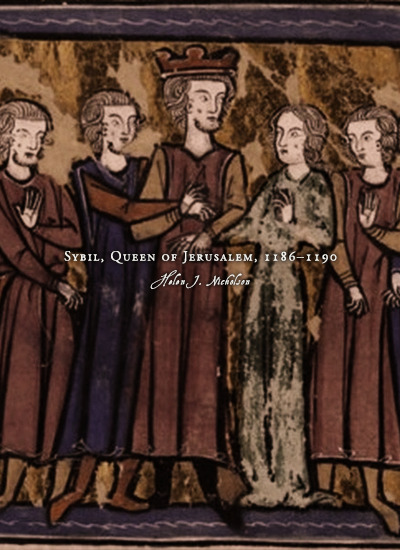


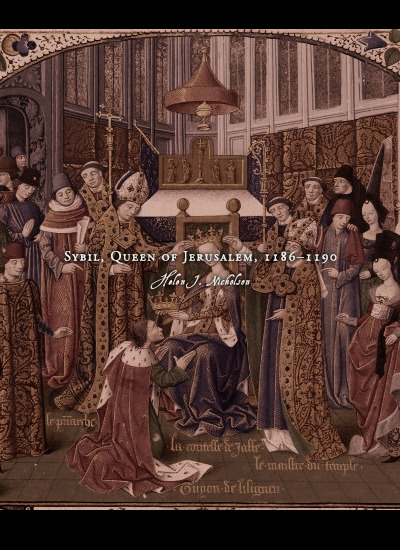
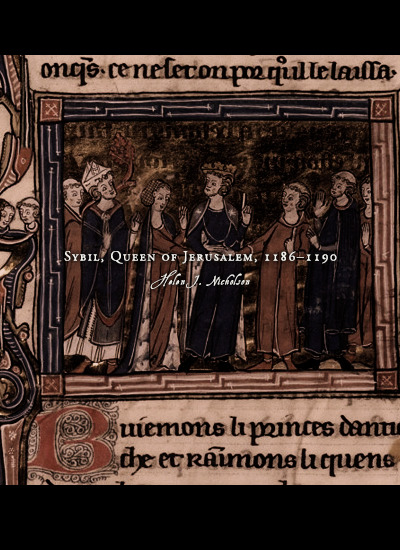

Favorite History Books || Sybil, Queen of Jerusalem, 1186–1190 by Helen J. Nicholson ★★★★☆
As a child, Sybil’s future prospects appeared excellent: as the eldest child of King Amaury of Jerusalem and as a member of the dynasty that claimed descent from Godfrey de Bouillon and the other heroes of the First Crusade, we might expect that she would have been an attractive marriage prospect. Yet European noblemen did not queue up to seek her hand. One reason for this might have been that commanding the defence of the kingdom of Jerusalem in the face of aggressive Muslim expansionism was a daunting prospect for any warrior, no matter how ambitious. Moreover, as her brother Baldwin’s illness became generally known in Europe, Sybil’s potential husbands may have wondered whether she and her children would be similarly afflicted. In addition, as her brother Baldwin and his council made clear to Philip of Alsace in autumn 1177, outside aid was unwelcome in the kingdom except on the terms they dictated. Robert VI of Béthune, Philip of Alsace’s candidate for Sybil’s hand, might have made a more effective count of Jaffa and Ascalon, regent of the kingdom and king consort than Guy de Lusignan, but Baldwin – aged only sixteen at the time of Count Philip’s crusade – preferred to marry his sister to a man he knew.
If King Baldwin IV had supported his elder sister as the heir who – given that Baldwin V was very young and in uncertain health – would almost certainly inherit the kingdom, it might have been possible for Sybil to unite the nobles of the kingdom behind her as her brother had done. But his contradictory and changing policies left her rights of inheritance unclear and the nobles of the kingdom divided. He married her to one of his household knights, then attempted to divorce them; he appointed her husband as procurator, then shortly afterwards deposed him and appointed her son as his co- ruler, and then appointed another procurator, then finally appointed two regents, one to care for the young king Baldwin V and the other to govern. If he made further arrangements for the succession after Baldwin V they were unworkable. By marrying his younger half-sister to a leading noble of the kingdom but forcing the bridegroom to surrender his inherited estates in return, King Baldwin IV ensured that both his sisters and their husbands and supporters had grievances against him. While his measures reduced any threat that he would be overthrown during his lifetime, they boded badly for the kingdom after the death of his immediate heir.
Given the rivalries between the leading nobles of the kingdom and Saladin’s need to win a decisive victory over the Franks, no one could have prevented Saladin from taking Jerusalem and conquering most of Sybil’s kingdom; Sybil was doomed to failure as queen. Not only did she lose Jerusalem, but she also failed in the most fundamental function of a noblewoman: she failed to provide an heir for herself, as both her son Baldwin and her daughters died in childhood. On the other hand, in the face of disaster she did not abandon her kingdom and flee to Europe, nor did she retire to a religious house. Instead, she stayed in the crusader states and did all she could to oppose the invader. She tried to defend Ascalon, she remained in Jerusalem until it was surrendered to Saladin, she obtained her husband’s release from Saladin’s prison, and by accompanying him in the months that followed she gave him the authority to continue as king of Jerusalem. As husband of the eldest daughter of King Amaury of Jerusalem and as a crowned king, Guy had a stronger claim to royal authority than Conrad of Montferrat: crusaders from Europe rallied to him and the representatives of the Italian maritime cities supported him so that he could begin the fightback against Saladin which was continued by the Third Crusade and enabled the kingdom of Jerusalem to continue to exist until 1291. When Sybil died, Guy’s authority died with her; but she had ensured that her kingdom would not die, at least for another century.
#historyedit#litedit#sibylla of jerusalem#french history#medieval#asian history#european history#women's history#history#house of anjou#history books
48 notes
·
View notes
Text

King Charles Robert of Anjou fleeing from the Battle of Posada (November 9-12, 1330). József Molnár.
#József Molnár#kingdom of hungary#magyar királyság#königreich ungarn#house of anjou#maison d'anjou#king charles robert of anjou#king of hungary
6 notes
·
View notes
Photo

Mary I (1370-1395), Queen of Hungary etc. Lithograph by Josef Kriehuber.
Mary, also known as Maria of Anjou, reigned as Queen of Hungary and Croatia (formally "king") between 1382 and 1385, and from 1386 until her death. She was the daughter of Louis the Great, King of Hungary and Poland, and his wife, Elizabeth of Bosnia.
Having no male siblings, Mary was crowned "king" of Hungary on 17 September 1382, seven days after Louis the Great's death.
Mary's marriage to Sigismund of Luxembourg, a member of the imperial Luxembourg dynasty, was already decided before her first birthday.
#anjou mária#mary of anjou#queen of hungary#josef kriehuber#magyar királyság#magyar királyne#full length portrait#kingdom of hungary#maison d'anjou#casa d'angio#house of anjou#full-length portrait#königreich ungarn#queen mary of hungary#queen mary I#mary of hungary#magyar királynő
16 notes
·
View notes
Text

23 March 1430: Marguerite d'Anjou is born at Lorraine, France. She later became Queen of England by marrying King Henry VI.
#house of lancaster#happy birthday to margaret of anjou#marguerite d'anjou#margaret of anjou#queen of england#house of anjou#plantagenet dynasty
2 notes
·
View notes
Text
Irish Coin Daily: Silver Farthing of John de Curcy, Lord of Ulster, (Second 'Anonymous' Coinage)
Date: c. 1195
John De Courcy, Lord of Ulster, Farthing, anonymous issue, Downpatrick Mint.
Description:
John de Courcy, (1177-1205), Farthing, Anonymous ‘St Patrick’ issue (c.1185-c.1205), Cross Potent with Crescents coinage, Farthing, Downpatrick mint.
Weight: 0.32g
References:
Allen dies [this specimen not listed]
Withers [not listed]
SCBI Ulster 336, same obv. die; S 6227; DF 47
Edge…

View On WordPress
#+DE DVNO#+PATRICII#Angevin#coin#county down#downpatrick#House of Anjou#irish#irish hammered#irish hammered coinage#john de courcey#john de curcy#lord of ulster#medieval#northern ireland#Processional cross#Richard I#second anonymous coinage#Short cross potent#silver#ulster#Anglo-Norman#farthing#Ireland
0 notes
Text
i'm a history nerd with an interest in royal history, sooooo
i know that England & Scotland didn't became Great Britain/the United Kingdom till the end of the Stuart era, but i wanna focus on the houses of england and (except for house of denmark) only england
#english royal family#english royal history#royal history#house of wessex#king of england#kings of england#queens of england#queen of england#house of denmark#house of godwin#house of normandy#house of blois#house of anjou#house of plantagenet#house of york#house of lancaster#house of tudor#house wessex#house denmark#house godwin#house normandy#normandy#house plantagenet#plantagent#house york#house anjou#house tudor#house lancaster#tudors#history poll
1 note
·
View note
Text
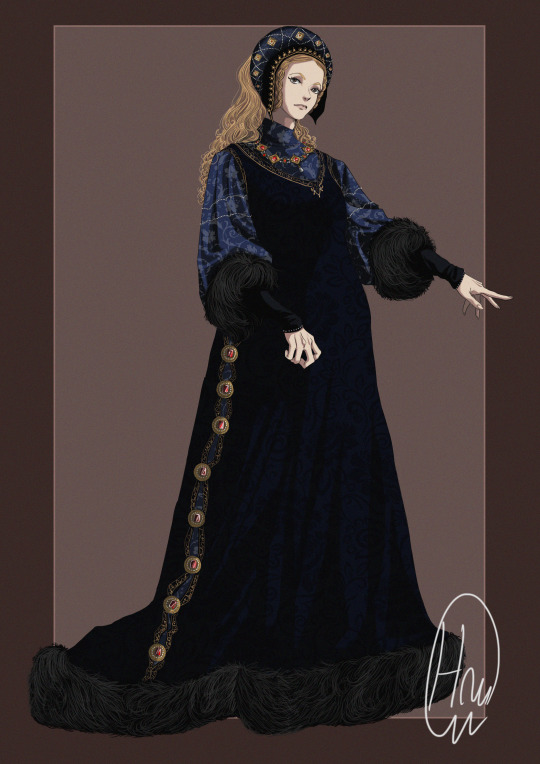
Elizabeth of York, fashion character design. Mourning outfit, c. 1482.
#the wars of the roses#15th century#medieval#middle ages#historical#british history#medieval england#art#illustration#sketch#edward iv#elizabeth woodville#elizabeth of york#henry vii#henry vi#margaret of anjou#margaret beaufort#isabel neville#richard iii#the white queen#the white princess#medieval fashion#historical fashion#character design#artists on tumblr#medieval costume#royals#house of york#plantagenets
227 notes
·
View notes
Text

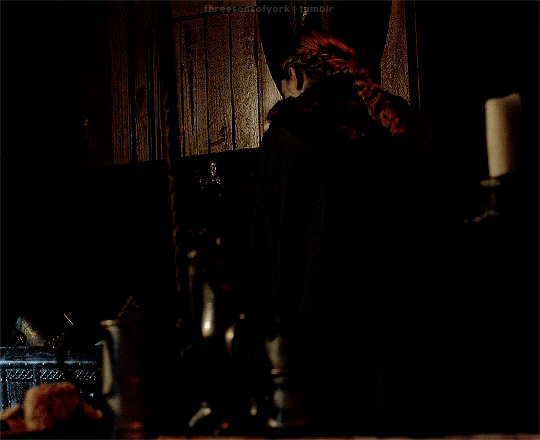






VEERLE BEATENS and FAYE MARSAY
as MARGARET OF ANJOU and ANNE NEVILLE
THE WHITE QUEEN (2013) | 1x05 "War at First Hand"
#I would be shitting my pants aaaaaaaaaaah “ yeah yeah sorry i'll think about it... please stop looking at me”#the white queen#margaret of anjou#anne neville#faye marsay#veerle beatens#house of lancaster#house of york#the wars of the roses#tv series#tvedit#weloveperioddrama#onlyperioddramas#twqedit#annenevilledit#mine#byfefa#margaretofanjouedit#userbennet#usergif#usersjen#valyrianpoem#violaobanion#userzaynab
121 notes
·
View notes
Note
What do you feel about the house of york
I feel like it's a medieval dynasty that one a war. That's about it.
I also think that Richard Duke of York was nothing more than a jealous cousin that saw the perfect opportunity to climb the ladder and took it, justly paying the price. Edward IV's anger over his and his brother's death is understandable and so were his actions. Too bad that he didn't saw that the Duke of York's ruthless ambitions had trickled down to his sons Richard and George before they tried it with him. I think the Woodvilles were overtly greedy and took too much of the hand that fed them making the nobility hate them, and they also paid for it. I mean, arranging prestige marriages for every single Woodville? I get it, one of them was the Queen, but come on now, they clearly overplayed.
On the whole, I find this representation of the Yorks as this typical Good HeirsTM that took their rightful place on the throne and stepped up through harsh times that persists so much to this day lame and reductive. The truth of the matter is, they were never more just and GoodTM than the Lancasters. The Lancasters successfully organized a coup and sat the throne, the Yorks did the same, demonizing Henry VI and Queen Margaret of Anjou through propaganda as a freak and an overly ambitious femme fatale respectively, while casting their teenage son as a cruel bastard. All for defending fiercely what was by right theirs (we have Shakespeare to blame for that as well).
#wars of the roses#house york#house lancaster#edward iv#richard duke of york#george plantagenet#richard iii#Henry vi#margaret of anjou#edward of westminster#medieval warfare#medieval england#late middle ages
26 notes
·
View notes
Text

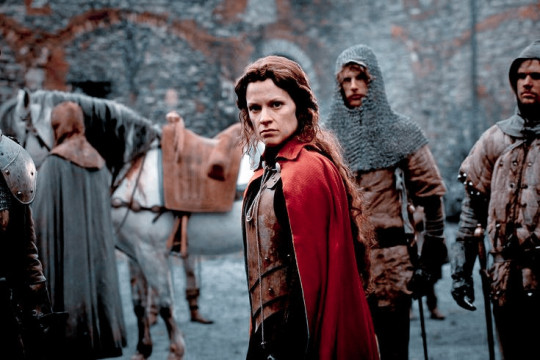



the white queen 10 year anniversary: best queen - m a r g a r e t | o f | a n j o u
#margaret of anjou#the white queen#twq#twqedit#twq10#perioddramaedit#15th century#wars of the roses#house of lancaster#weloveperioddrama#myedit*#mine*
42 notes
·
View notes
Note
Are you Lancaster
1) This is indeed @whiteswanoflancaster — I just have a very strange blogging setup going on that I haven’t bothered to do anything about yet😭
2) a little self-consciously, but yeah! I find it rather strange to take sides in a 550–year–old conflict, but despite that I’d say I support the Lancastrians! This is because:
- While Richard of York was undoubtedly more competent than Henry VI — and while I’d even argue he didn’t want to take the crown — there’s no getting around either the fact that he did or the fact that, in doing so, he completely destabilised the system of government in England, which probably wasn’t a price worth paying — many historians argue that Edward IV and Henry VII introduced a “new monarchy,” their financial systems and tight control of the nobility actually resembled the systems of earlier rulers such as Edward III, and weren’t all that new at all! There isn’t really a huge difference between Edward IV giving land to his brothers and Edward III giving it to his sons, in my opinion — and so the Wars of the Roses and by extension York’s decision to disrupt the system by claiming the crown led to politics taking a bit of a “backward step” towards a less efficient system. Without that disruption, England might have been better able to flourish in the sixteenth century — and there’d have been far less death.
- Their story is just appealing in my opinion! There’s a certain romance to it that caught my attention and refused to let go — and it’s also there at the end of the wars, with Henry Tudor and his allies standing for Lancaster. It’s a little bit shallow, but I do love a good story — and this is certainly that!
- Margaret of Anjou was very, very cool and deserves to be more widely known about and appreciated. Enough said 😭
#wars of the roses#history#fifteenth century#house of lancaster#there are two wolves inside me#the serious historian#and the Margaret of Anjou fangirl#ask#thanks for the ask!
12 notes
·
View notes
Photo
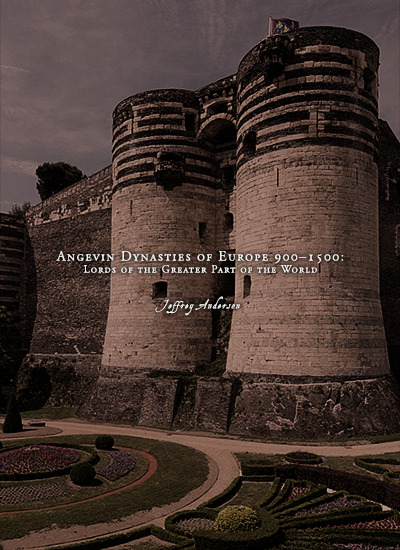





Favorite History Books || Angevin Dynasties of Europe 900–1500: Lords of the Greater Part of the World by Jeffrey Anderson ★★★★☆
In the 15th century, when Richard, Duke of York wanted to emphasize his claim to the English throne in opposition to King Henry VI, he took a new name for himself: Plantagenet. This resonant name, which referred to a 12th-century ancestor, became – with a little help from Shakespeare – the family name historians use for the monarchs that ruled England from Henry II (1154–1189) until the accession of the first Tudor king in 1485. On Bosworth Field the defeat of Richard III ended the line of Plantagenet kings, but this name remains the most evocative in medieval English history. The greatest exterminatrix in the Plantagenet ‘Wars of the Roses’, at least according to Shakespeare’s plays about Henry VI, was Margaret of Anjou, Queen of England, who not only led troops against her rivals but also murdered Richard Plantagenet with her own hands.
Far away from the civil war in England, Margaret’s father, King René of Anjou, presided over one of the most sophisticated courts in Europe. Through genealogy and good fortune, René had become Duke of Anjou, Lorraine and Bar, Count of Provence and titular King of Sicily, Jerusalem and Aragon, and despite military reversals and a chronic lack of funds he had established peerless intellectual and cultural credentials. René held pageants and classically inspired processions in Naples and Lorraine, corresponded with the humanists credited with initiating the Renaissance, wrote (and possibly illustrated) chivalric romances and treatises that are amongst the most sumptuous manuscripts of the 15th century, and founded a chivalric order dedicated to dressing up and telling fabulous stories. Nothing could seem further from the vicious battles of the Wars of the Roses than René’s choreographed jousts and his obsession with elaborate costumes. The Plantagenets, who included some of the most effective kings in English history and were now locked in a desperate struggle for supremacy in England, seem to have little in common with the rulers of Anjou – the Angevins – like King René, who amused themselves with literature and learned displays of chivalry.
Yet the Plantagenets were Angevins. King René and Queen Margaret united two Angevin lines, one of which ruled England as the Plantagenets, and another that between the 12th and 15th centuries at one time or another ruled Anjou, Lorraine, Bar, Provence, Catalonia, Piedmont, Florence, Rome, Naples, Sicily, Albania, Greece, Hungary, Croatia, Poland and Jerusalem. Their line included conquerors, saints, philosopher kings, reigning queens, usurpers, reformers and patrons of the greatest art of the Middle Ages.
This is the Angevin story. It encompasses all the major events of European history from the 9th to the 15th centuries, and demonstrates the international sweep and cultural dynamism of Europe’s most compelling dynasty.
#litedit#historyedit#house of plantagenet#house of anjou#capetian house of anjou#medieval#french history#european history#history#history books#nanshe's graphics
28 notes
·
View notes
Note
What is your opinion about Edward of Lancaster (son of Henry VI) being labeled a cruel prince, and Margaret of Anjou being labeled a villain? I believe that’s all yorkish propaganda for getting people on their side during the War of the Roses. I hate how mostly in books, they portray him cruel, especially with his wife Anne Neville. It’s a hidden gem for me to find some work where their marriage is one of love, or at the very least one of friendship/understanding. Also ones where Margaret is not evil, and just fighting for her family, and for what belongs to them.
I think that this is an unfair assessment considering the fact that he grew up in a civil war which saw his father deposed and he and his family exiled so a certain measure of caution is natural. One may also note that his comments about wars was recorded in 1467 by the Milanese ambassador to France and Milan at that time was against the House of Anjou ( his mum's family). Furthermore, he was 14 at that time and we don't deem teenagers cruel for being edgy, do we? And as for the relationship between him and Anne Neville, there is simply no evidence of him being abusive ( and for that matter, we don't know much about it at all) .
11 notes
·
View notes
Text

Portrait of Joanna II of Naples. Unknown artist.
#regno di napoli#casa d'angio#maison d'anjou#kingdom of naples#queen joan ii of naples#giovanna d'angio#regina di napoli#joanna ii of naples#house of anjou#Château de Beauregard
6 notes
·
View notes
Text
Favorite royals who were devoted mothers.
Marguerite d’Anjou, Queen of England.
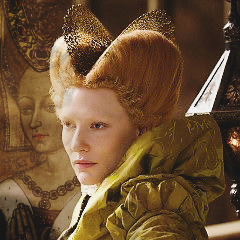
#house of lancaster#house of Anjou#plantagenet dynasty#house Plantagenet#margaret of Anjou#Marguerite d’Anjou#queen margaret#reine marguerite#cate blanchette
1 note
·
View note
Text
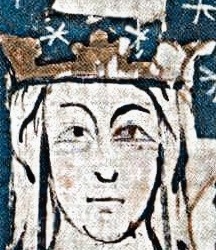

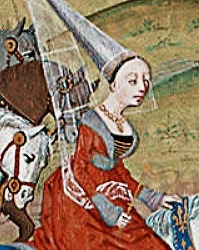


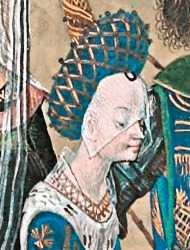


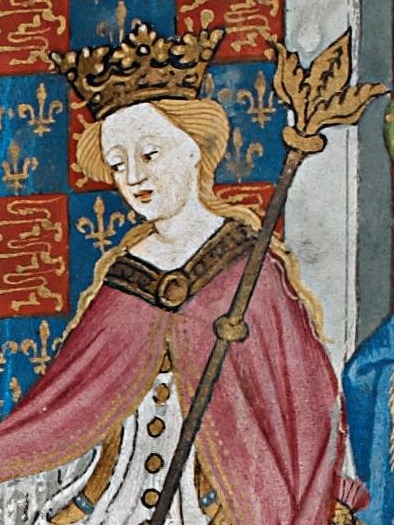

CONSORTS OF ENGLAND SINCE THE NORMAN INVASION (2/5) ♚
Eleanor of Castile (November 1272 - November 1290)
Margaret of France (September 1299 - July 1307)
Isabella of France (May 1308 - January 1327)
Philippa of Hainault (January 1328 - August 1369)
Anne of Bohemia (January 1382 - June 1394)
Isabella of Valois (October 1396 - September 1399)
Joan of Navarre (February 1403 - March 1413)
Catherine of Valois (June 1420 - August 1422)
Margaret of Anjou (May 1445 - May 1471)
Elizabeth Woodville (May 1464 - April 1483)
#my photoset.#history#historyedit#history edit#plantagenets#lancaster#house of lancaster#house of york#elizabeth woodville#margaret of anjou#catherine of valois#the king netflix#the white queen#joan of navarre#isabella of valois#anne of bohemia#philippa of hainault#isabella of france#margaret of france#eleanor of castile#royalty#royals#medieval history#medieval queens#queen consorts#war of roses#english history#historical royals#consorts of england#consorts of england and britiain.
139 notes
·
View notes